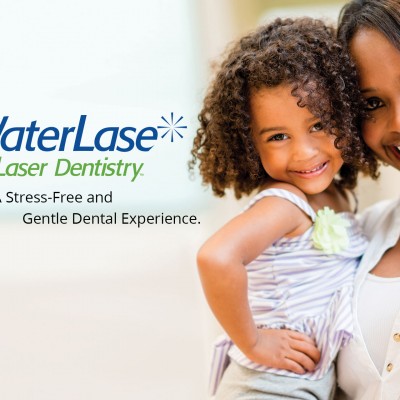Would you stop avoiding the dentist if you knew treatment for gum disease (also known as periodontal disease) was faster and less painful? It can be.
Gum disease has become a major issue in the United States – in fact, nearly 70% of adults have some form of it – but it is important you address it, quickly. Ignoring the disease will result in receding gums, bone erosion and even tooth loss. It may also be linked to life-threatening illnesses including cancer, heart disease, diabetes and even auto-immune disorders.
If you’re holding off on seeking treatment, think about this: Technology is changing our world in so many ways, but did you know it is also revolutionizing dental treatments?
Finally, a New Way to Treat Gum Disease
Gum disease is caused by bacteria in periodontal pockets, deep in the gum tissue down to the tooth roots. Previously, the only treatment option was periodontal surgery with a scalpel and sutures, cutting your gums to reach and eliminate bacteria.
Now, with the patient-friendly REPAIR Periodontal Treatment protocol using a WaterLase dental laser, there is a minimally invasive approach to treat gum disease that is better for you and your oral health.
Unlike most lasers historically used in periodontal therapy, the WaterLase is a true all-tissue laser. It is indicated for use on soft tissue, bone and tooth structures, making it extremely versatile.
Periodontal Laser Treatment is clinically proven to treat gum disease in a way that helps preserve tissue and bone, while reducing post-operative discomfort, compared to conventional treatment. Under this minimally-invasive treatment protocol, a WaterLase dental laser is used in place of a scalpel to directly target small or large areas of gum and clear out disease-causing bacteria trapped deep within periodontal pockets.
What is the treatment like?
Most periodontal lasers cut tissue using heat. The WaterLase combines YSGG laser energy and a patented spray of water to cut soft tissue and bone without heat, with benefits reported such as less swelling and patient post-op sensitivity, for a better patient experience and greater case acceptance.
The focused laser energy used in the treatment protocol also disinfects the operative site as it works! This can help reduce risk of further infection, meaning shorter patient recovery time.
Dr. Sam Low, University of Florida professor emeritus, with 30 years of practice in periodontics and implants, is an expert on this treatment method. He notes its improvements to the healing process and overall patient experience as follows, “QUOTE HERE.”
Treat early signs of gum disease now, with less discomfort and recovery time, to avoid a serious health crisis later.
But are these treatment protocols gentle and effective for use on dental implants too? You bet.
Peri-implantitis is a growing problem in implant dentistry. Over 500,000 implants are placed each year in the U.S. An estimated 10% to 48% of all implants over 5-10 years old are affected by peri-implant mucositis or peri-implantitis.
Peri-implantitis is a serious infection that inflames the gum and bone surrounding long-term dental implants. When left untreated, compromising bone loss will occur, causing the implanted tooth to loosen and leaving options for repair or replacement very limited. Not to mention evasive and painful.
Incidence of peri-implant mucositis and peri-implantitis is as high as 43% and implant failure rate are estimated to be as high as 18%. This is a growing disease state in dentistry and there is a minimally invasive treatment option to help save your implants.
Much like the protocol used to treat gum disease for natural teeth, the REPAIR Implant protocol, using a WaterLase dental laser, treats peri-implantitis by carefully focusing laser energy on the area afflicted. This results in less harm incurred by healthy surrounding gums or the jawbone below. The gentle nature of this procedure limits patient discomfort while carefully knocking-out bacterial growth deep within the gum line. Less post-operative pain may mean further benefits by reducing the need for anesthetic drugs that may prove risky for use by elderly patients.
Undergoing traditional treatment methods involving sharp dental instruments is often concerning to implant patients, as well as their dentists. Even minor scratches left on implants during standard cleanings increase the likelihood of bacterial growth attaching to an area of the tooth and causing infection. Dr. Gerry Curatola notes that the treatment applied using the WaterLase dental laser leaves his patient fears surrounding the harm caused by harsh dental tools, a worry of the past.
You’ve taken good care of your implants all these years. Why risk a serious bone infection by waiting to clear out peri-implantitis until it’s too late.
With WaterLase, the long and painful recovery process involved with traditional periodontal surgery is gone. For good.
Visit www.waterlase.com to find a WaterLase Dentist near you.
